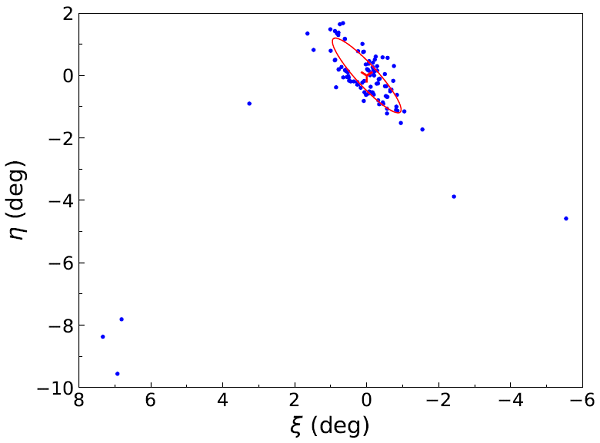The Andromeda Galaxy M31 is the closest large spiral galaxy to our Milky Way and is an ideal astrophysical laboratory for astronomers to study galaxy formation and evolution. Clusters include young open clusters, old globular clusters, and young massive clusters. They are widely distributed throughout the galaxy from the nuclear sphere and disk to the outer halo, documenting the early formation and evolutionary history of galaxies and are an excellent tool for revealing the integration history of galaxies.
Astronomers have long been working on the identification of clusters in M31 to obtain a complete sample of M31 clusters. Recent wide-field photometric and spectroscopic surveys have provided an opportunity to identify the M31 clusters. But how to find and identify the special objects we need from the tens of millions of images provided by the deep wide-field photometric surveys is a difficult problem at present.
Recently, Professor LONG Qian of the Lijiang Observatory of Yunnan Observatories of the Chinese Academy of Sciences, in collaboration with Dr. WANG Shoucheng and Prof. MA Jun of the National Astronomical Observatory and Associate Professor CHEN Bingqiu of Yunnan University etc., selected the M31 clusters, Galactic foreground objects and background galaxies from the LAMOST DR6 data, and combined the M31 clusters and non-cluster samples given in the literature as training samples to construct a class of two-channel deep convolutional neural network (CNN) model, which was able to achieve 99% accuracy in the test set.
Using this model, the researchers identified 117 high-confidence M31 cluster candidates from more than 21 million images obtained by the PAndAS photometric survey (Figure 1), most of which are young clusters in the disk of M31; eight others are located in distant halos more than 25 kpc (kiloparsec, 1kpc ≈ 3262 light-year) from the center of M31, and they are old globular clusters.
The research work has been published in the mainstream international astronomy journal Astronomy & Astrophysics.
Contact:
LONG Qian,Yunnan Observatories, CAS
longqian9509@gmail.com

Figure 1. Spatial distribution of the newly identified M31 cluster candidates in M31. The red Y symbol is the center of M31, and the red ellipse indicates the extent of the M31 disk. Most of the 117 newly identified M31 cluster candidates (blue dots) are located in the M31 disk, with 8 in the distant halo from the center of M31. The blank area in the upper left corner of the M31 disk is the area of the Hubble Telescope PHAT survey, where scientists have already found a large number of cluster candidates using Hubble data, while in the area without Hubble data (the lower right part of the M31 disk and the outer regions), we have used new methods to obtain new breakthroughs using data from ground-based telescopes (LAMOST, PAndAS, etc.).